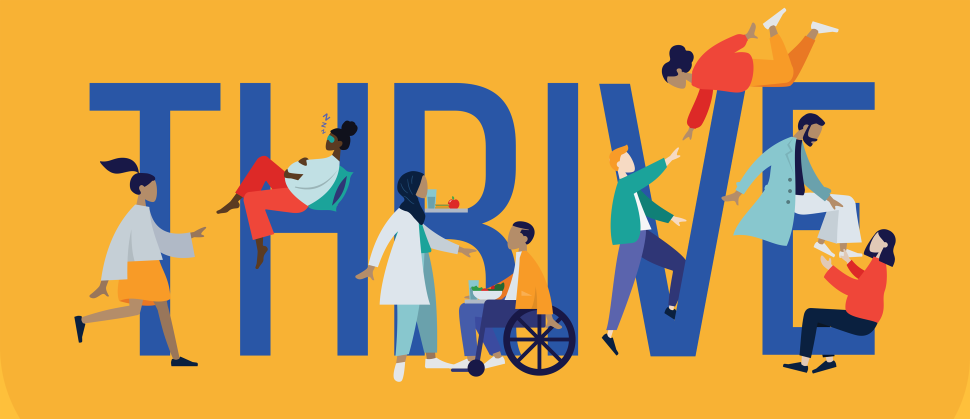As the UBC community greets the start of a new academic year, one thing is certain: this will be a September like no other. There will be additional stressors to navigate in what continues to be uncertain and challenging times.
When we recognize and manage our stress and build on our capacity for resilience, we are giving ourselves the best chance to thrive in challenging times. Adjusting to the return to campus and hybrid model will require planning, reflection, and revision. Try to schedule some time into your workweek to plan for the week(s) ahead and be gentle with yourself in this transition. To help get you started, we want to share a few ways you can regularly de-stress, and find relief during some of the coming uncertainty.
Dealing with stress and anxiety
It can be helpful to pay attention to any feelings of anticipatory stress or anxiety. This kind of anxiety is attached to thinking about an event or situation in the future, this thinking can activate the stress response where we can experience a range of physical signs like increased blood pressure and shortness of breath. We can often interrupt this just by recognizing that we are thinking about events and situations that have not yet happened and that this may not be serving us.
- Use relaxation strategies like deep breathing, mindfulness practices or progressive relaxation to help reset your mind and body.
- Faculty and staff at UBC have access to clinical counsellors in addition to lots of wellbeing tools and resources through our Employee and Family Assistance Program, from LifeWorks (formerly Morneau Shepell)
- Anxiety Canada has some good information and tools available.
Bolster your resilience
Continue to build your resilience with the Thrive 5+.

Ensure that you get enough rest and sleep by practicing good sleep hygiene and aim for at least seven hours of sleep. Sleep hygiene is supported by going to bed at the same time each night and waking at the same time each morning to help your body develop a routine. Develop an evening routine that encourages your body to relax and prepare for sleep. And if you can, reserve your bedroom for sleeping and intimacy and refrain from using the room for other activities, such as doing work.
Move more by adding activity to your day to burn off stress and boost your mood. I plan to keep my Pick Your Peak stairclimbing workouts going! Studies have shown that incorporating physical activity into the workday like yoga or walking over your lunch break can improve wellbeing by lessening anxiety, confusion depression, stress and fatigue. Any movement is good movement, so if you prefer to dance like nobody is watching or play with pets and children, just take a moment to enjoy the moment.
Eat and hydrate well to fuel your mental and physical health. One way to ensure eating well is to eat a well-balanced breakfast. Breakfast is the fuel that gets the body going. Without food early in the day, the body runs out of gas late in the day and craves food which can lead to choosing less healthy options and sugar spikes. Aim for any meal to be well balanced with protein, plenty of fruits and vegetables and whole grains. For tips see the Canada Food Guide.
Being hydrated helps reduce fatigue, improves movement and aids in digestion. Make water your drink of choice. Herbal teas, decaf coffee, carbonated water are all good choices. Learn more about meeting your hydration needs here.
Give back by helping others. Consider reaching out to colleagues who have joined the UBC community during the pandemic, and not yet been on campus or not had a chance to network in person. They will likely benefit from this attention and helping others makes us feel good and boosts resilience.
Say hi when we return to campus. A friendly smile and greeting goes a long way to relieving worry. Did you know that endorphins are released when we smile, making us feel less stressed and happier? I know I have missed greeting students who are new to campus and socializing with colleagues.
But don’t stop with the stress and resilience tips in this article; this edition of Healthy UBC has plenty more helpful information and great resources to support overall wellbeing:
- Helpful tips for the return to campus adjustment,
- The Return to the Workplace tool kit, just one of many practical resources you’ll find through the Not Myself Today initiative
- Learn how the Wellness Assessment from LifeWorks can help guide you through the wellbeing programs available through our EFAP.
If you have concerns about safety and support in the return to campus, this is understandable. Connect with your manager or head and have a conversation. Not sure how? Take a look at the Guidelines for Faculty/Staff Regarding Concerns with Returning to In-Person Work. And don’t forget about the curated faculty and staff mental health resources available on the HR website.
If you are a leader and looking for resources and tools to support your team in this transition, you can find helpful resources on the Managing employees during COVID-19 page.
To finish, I would also like to acknowledge that when we prioritize our wellbeing, when we are knowledgeable about available resources, and we talk openly about mental health — collectively we build a supportive and caring campus community.
Keep safe and well,
Amanda Swoboda
Wellbeing Specialist, UBC Okanagan
Posted in Articles
Tagged
- HR
- Healthy UBC